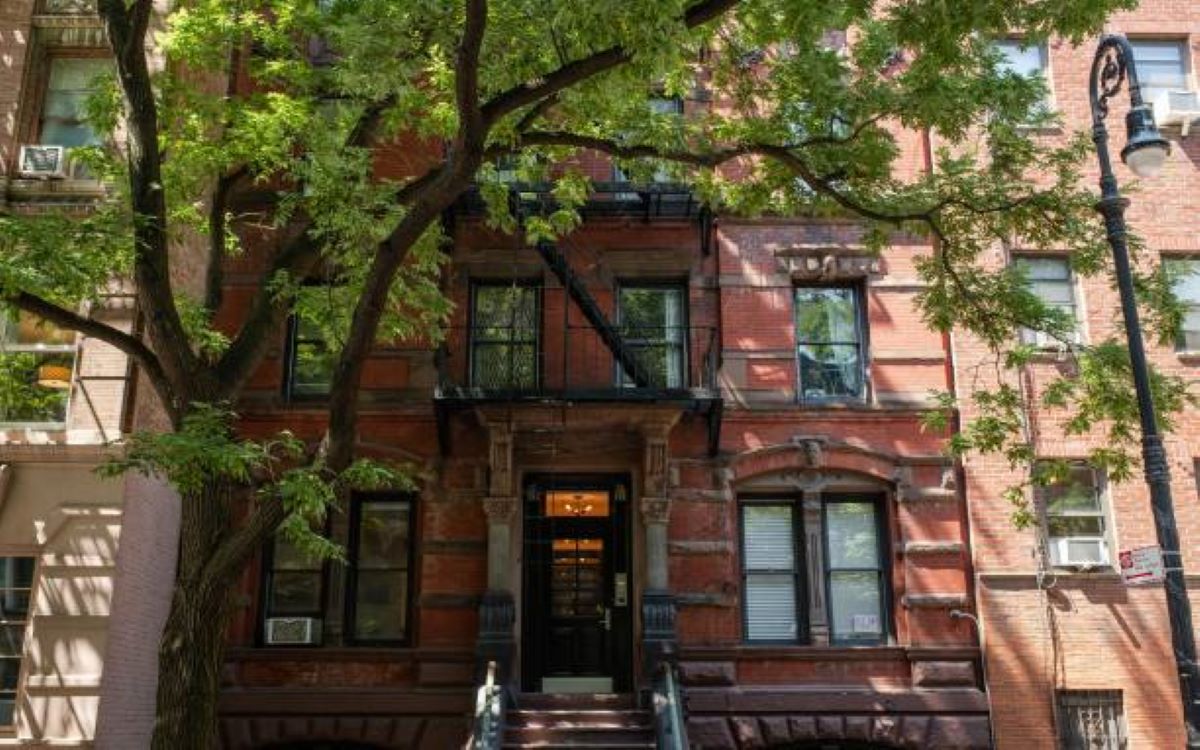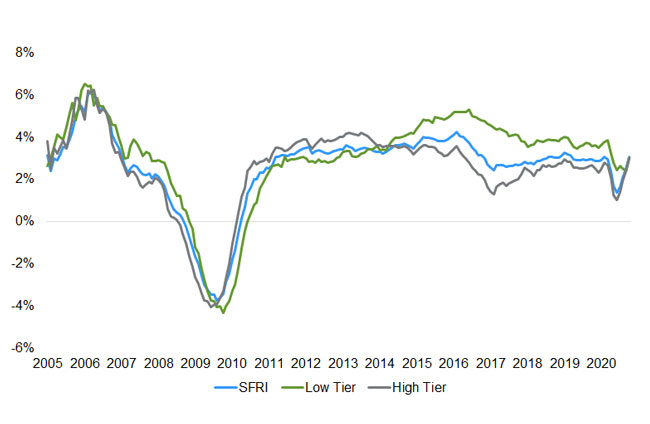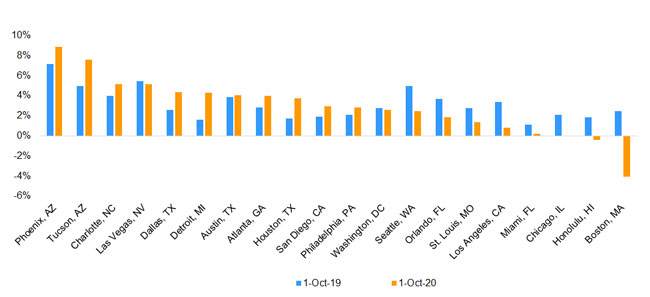
U.S. single-family rent growth strengthened in October, increasing 3.1% year over year, showing solid improvement from the low of 1.4% reported for June 2020, and up from the 2.9% rate recorded for October 2019, according to the CoreLogic Single-Family Rent Index (SFRI). The index measures rent changes among single-family rental homes, including condominiums, using a repeat-rent analysis to measure the same rental properties over time.
Figure 1: National Single-Family Rent Index Year-Over-Year Percent Change By Price Tier

Low-priced and high-priced rentals grew at roughly the same rate in October, a departure from the six-year trend of low-priced rentals having significantly faster growth then high-pried rentals (Figure 1). Unlike the high-priced tier, rent growth in the low-priced tier remains below year-pre-pandemic levels as the recession has disproportionately affected lower-wages workers. Rent prices for the low-end tier, defined as properties with rent prices less than 75% of the regional median, increased 3% year over year in October 2020, down from 3.6% in October 2019. Meanwhile, higher-priced rentals, defined as properties with rent prices greater than 125% of a region’s median rent, increased 3.1% in October 2020, up from a gain of 2.6% in October 2019.
Figure 2: Single-Family Rent Index Year-Over-Year Percent Change in 20 Markets

Figure 2 shows the year-over-year change in the rental index for 20 large metropolitan areas in October 2020. Among the 20 metro areas shown, Phoenix had the highest year-over-year rent growth this October as it has since late 2018, with an increase of 8.9%, followed by Tucson (+7.6%) and Charlotte (+5.2%). Two metro areas experienced annual declines in rent prices: Boston (-4.1%) and Honolulu (-0.4%).
While 10 of the 20 metros shown in Figure 2 had lower rent growth than a year ago, Boston had the largest deceleration in rent growth, showing annual rent growth of 6.5 percentage points lower than in October 2019. The weakness might be attributed to a large number of students choosing to not return to Boston — a city that’s home to 35 colleges and universities — but instead opting to continue virtual learning in their hometowns.
U.S. unemployment rates remain elevated and the nation had 6% fewer jobs in October 2020 than a year earlier. However, some areas of the country are continuing to experience higher rates of job loss — adversely impacting rental demand and slowing rent price growth. For example, Honolulu posted an employment decrease of 15.4%, compared to October 2019, which has contributed to a 0.4% decline in single-family rent prices. Meanwhile, employment declines in Phoenix (-2.4%) and Tucson (-3.4%) were relatively small amongst the 20 metros covered in the report. With the continued resurgence of COVID-19 cases across the country, we may expect to see further disruption of local rental markets.
To learn more about the data behind this article and what CoreLogic has to offer, visit https://www.corelogic.com/.







Sign up to receive our stories in your inbox.
Data is changing the speed of business. Investors, Corporations, and Governments are buying new, differentiated data to gain visibility make better decisions. Don't fall behind. Let us help.













Sign up to receive our stories in your inbox.
Data is changing the speed of business. Investors, Corporations, and Governments are buying new, differentiated data to gain visibility make better decisions. Don't fall behind. Let us help.





